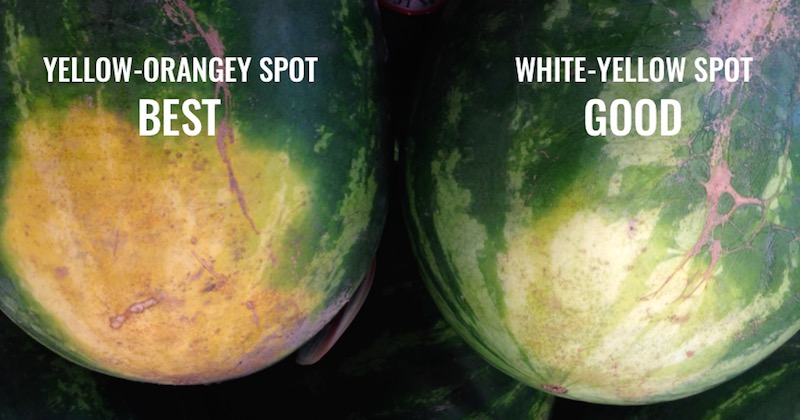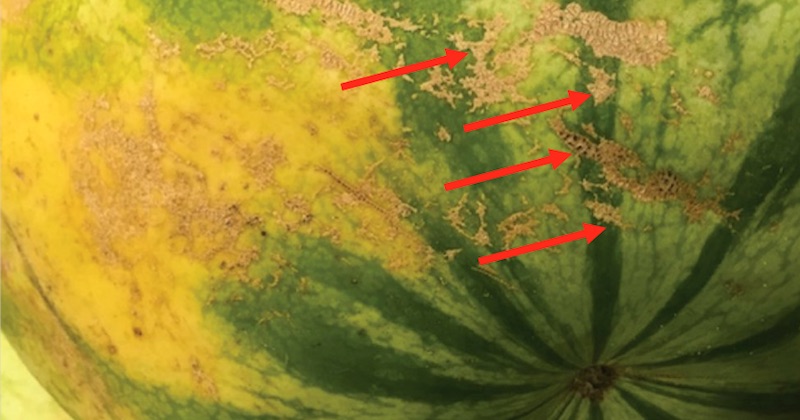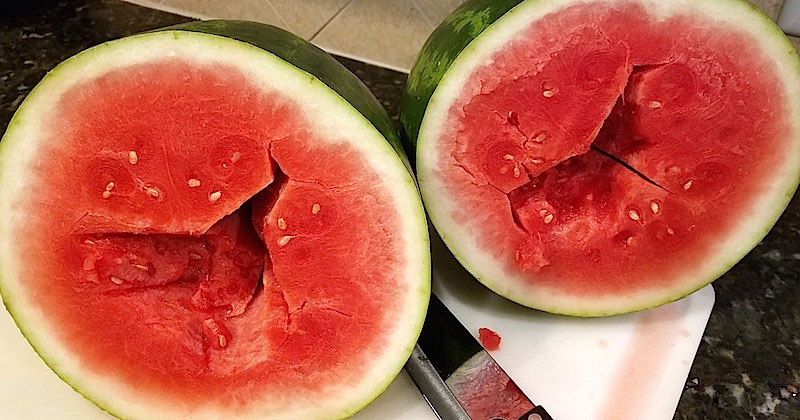7 Quick Tips On How To Pick A Juicy And Sweet Watermelon Every Time
Last updated on
Watermelon is one of the best summer fruits. It is a refreshing satisfying snack to have on a hot day. I mean it tastes great, contains very few calories, and is loaded with antioxidants and rich nutrients.
Watermelon Benefits
- Rich in beta-carotene, which is beneficial for skin and bone health
- Improves eye health, prevents macular degeneration
- Relieves constipation
- Reduces muscle cramps
- Lowers blood pressure
- Increases blood flow
- Hydrates and nourishes the body
- Acts as a diuretic
Imagine drinking a big glass of watermelon juice, it is oh so refreshing!
I have recommended watermelon juice so many times to different people for different ailments and it always work: To relieve constipation (especially for kids!), to reduce bloating and water retention, relieve pain, kidney cleansing, or simply to reduce PMS symptoms.
Read about the full health benefits of watermelon.
How To Pick The Best Watermelon Every Time
1. Appearance of watermelons
Pick a watermelon that has a nice oblong or round shape, not deformed in any way. It shows that the melon received adequate sun and water while on the vine. The skin should look dull or matt, not shiny. A shiny watermelon is under-ripe.
Pick one that is free from bruises, cuts or blemishes, and that isn’t too big. You may be tempted to buy the biggest watermelon, but it is better to buy two medium ones than to get one big one. The medium ones are about the best.
A melon that has a hole or is broken in any way allows air into the fruit and will ferment.
2. Weight of watermelons
Choose a watermelon that feels heavy. Pick up a few other melons of the same size and choose the heaviest one, considering all the other factors discussed here. The weight is the juiciness of the melon.
3. Watermelon field patches
All ripe watermelons have a “field patch” or “field spot” that is pale-yellowish in color, ranging from white to yellow, to orangey. Watermelons are heavy and they sit on the ground as it ripens. The longer it stays on the vine, the riper and sweeter it will be.
When picked too soon, the “field spot” is small or almost non-existent—avoid those. Watermelons don’t continue to ripen once they’re cut off from the vine and will remain less sweet.
A big white spot on the watermelon indicates that it is almost ripe, but not quite ripe so it may not be as sweet as the yellow spots, or even better—the orangey spots (best!).

4. “Male” and “female” watermelons
On many other sites, there are mentions of watermelons having a “male” or “female” gender. Sorry to disappoint, but this is not entirely accurate, from a botanical perspective.
It is said that the “male” watermelons are oblong in shape, is watery and less sweet. Whereas, the “female” watermelons are round in shape and sweeter.
The truth is: Watermelon vines have male and female flowers, but the male flowers don’t produce fruit—they just pollinate the female flowers. The fruits do not have genders.
The shapes of the watermelons—whether oblong or round—don’t really indicate the juiciness or sweetness of the melons. There are hundreds of watermelon varieties, and so many factors that can affect the juiciness and sweetness of the melons.
5. Watermelon webbing
When buying fruits, we often want our fruits to look flawless. But, on a watermelon, you may see brown marks like “scars” that farmers call “webbing” (see image below).
These brown marks are actually scarring that occurs as a result of bee pollination that makes the fruit sweeter. So, the more webbing on the melon, the sweeter it will be.

6. Tapping the watermelon
Tapping the watermelon is a good way to tell if the watermelon is a good or bad one. But, what do you really look for when tapping the watermelon?
It takes a little practice and you will soon find that it is a great way to pick a good watermelon.
After considering all the above tips on the appearance of a watermelon, do the tapping method.
When tapping a watermelon, you want the sound to be solid, like tapping on wood—that’s a good watermelon.
If when tapped and the watermelon sounds like a dull thud, like the sound doesn’t bounce back, you can be sure that the watermelon is “soggy” and over ripe.
7. With or without seeds
When buying a watermelon, you may be tempted to pick a seedless watermelon. I know it is annoying to spit out those seeds, but those seeds are proof that it is a “real” watermelon.
Seedless watermelons are genetically modified, so you want to avoid those seedless ones. A discussion on a Penn State Science course page refers seedless watermelons as “a genetically created hybrid”, and has this to say:
Seedless watermelons are the product of cross-breeding a “male” watermelon pollen with 22 chromosomes per cell, with a “female” watermelon flower with 44 chromosomes per cell. This mixture of cells creates a sterile fruit that is incapable of further producing seeds. Therefore, you cannot grow a watermelon from a hybrid, seedless watermelon.
Fruits are meant to have seeds, always choose those with seeds over “seedless”. As they say, “Seedless foods will breed a seedless (infertile) generation.”
Learn why you should eat watermelon seeds and how.
Do Not Eat This Watermelon

Have you ever come across “hollow” watermelons?
If you ever were unfortunate to have bought a hollow watermelon, it is best to discard it. Here’s why …
In hopes of making their watermelons grow bigger and faster for more profit, farmers are using a chemical spray known as forchlorfenuron.
What is forchlorfenuron?
This chemical is a growth accelerator that stimulates lateral growth within the fruit to make it firmer and last longer.
Most likely, these watermelons are from China. However, this substance is also allowed in the United States for use on other fruits, such as kiwifruits and grapes.
According to the EPA Pesticide Fact Sheet, the chemical is “not necessarily harmless”, but some side effects revealed in animal studies included:
- Increased incidence of alopecia (hair loss)
- Decreased maternal and fetal body weights
- Increased pup mortality
- Decreased litter sizes
Forchlorfenuron is also categorize as “moderately toxic to freshwater fish on an acute basis”, and “slightly higher toxicity levels in the avian population”.
How does forchlorfenuron affect the fruits?
You may not be able to tell from the outer appearance, whether the melon has been treated with the growth accelerator chemical, except that they may be very large and possibly brightly colored.
If you are familiar with how tapping a good watermelon should sound, then this one would sound hollow.
Only when cut, that you can see the hollowness of the melon. As ripened fruits are most often tastiest and juiciest, a forchlorfenuron-treated watermelon that has been forced to grow faster and prematurely, will lack flavor.
Some of the links I post on this site are affiliate links. If you go through them to make a purchase, I will earn a small commission (at no additional cost to you). However, note that I’m recommending these products because of their quality and that I have good experience using them, not because of the commission to be made.
Comments
Leave a Reply
































 JOIN OVER
JOIN OVER
Great article…..AMEN!!! to the seedless fruit comments. I always felt that fruit that cannot produce life from itself cannot promote life in us. Thank you, much appreciate your information.